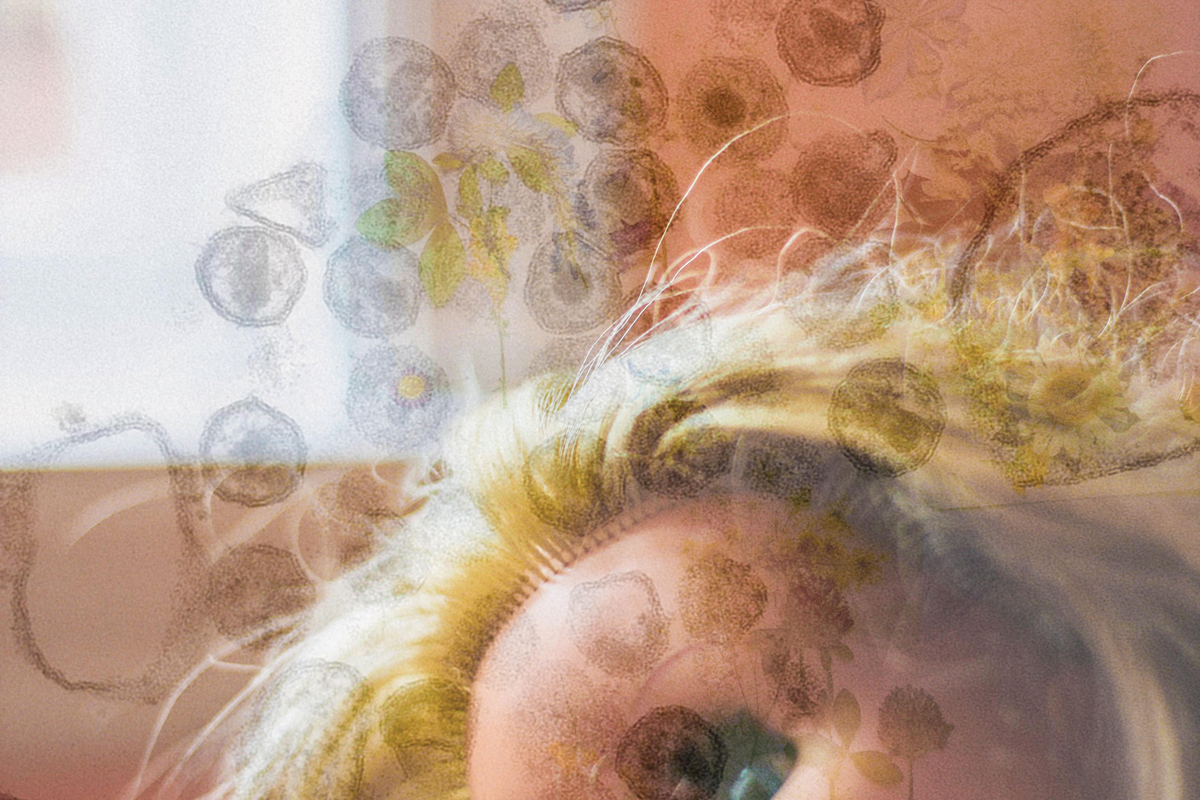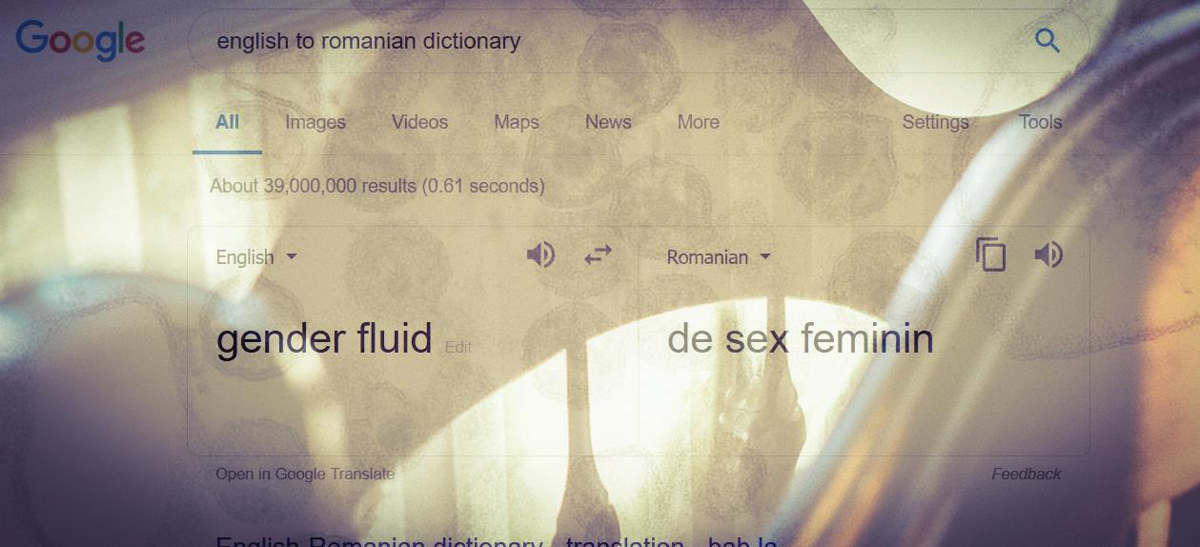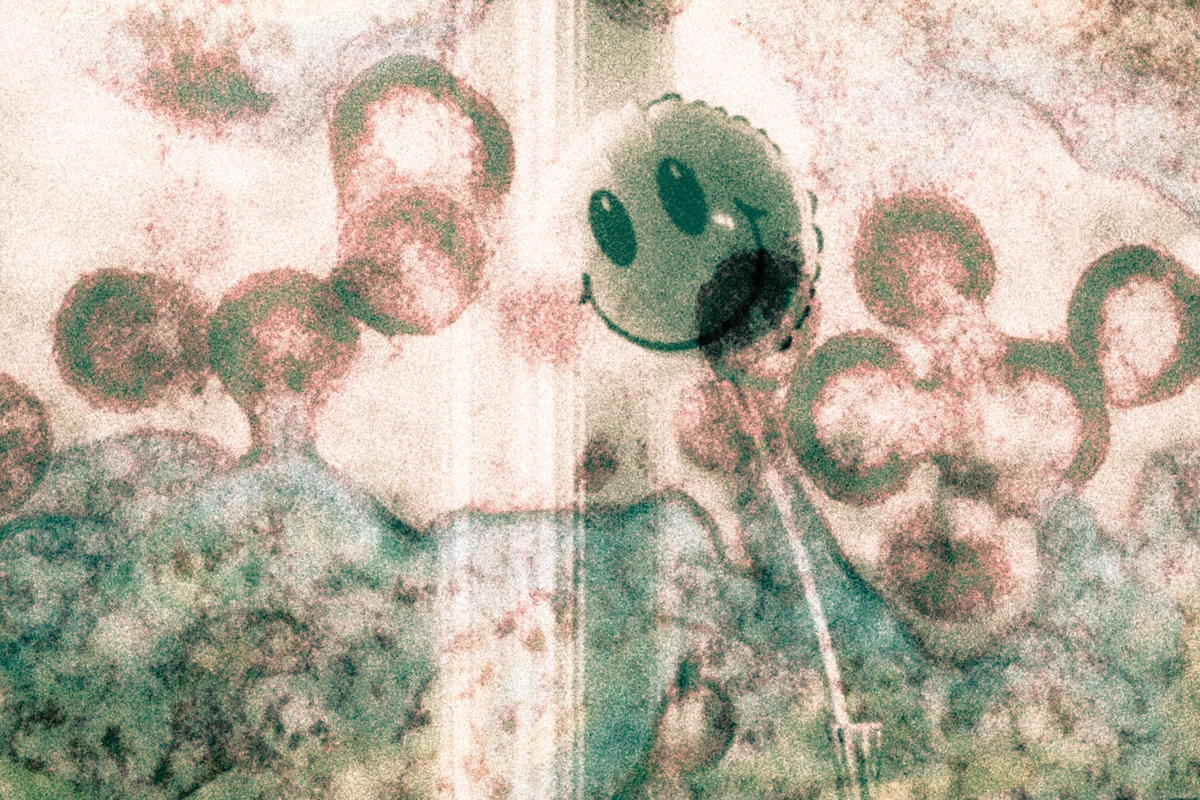

Amețitor [Dizzying], 2019
Dee Stoicescu is a Romanian-born queer artist and writer from Toronto. Their art is a deeply personal and poetic account of their journey to reconnect with their Romanian ancestry and navigate deep family secrets. Dee’s work engages queerness, HIV, immigration, and childhood; it tries to express their need for understanding from their family and their desire to find community.
Jessica: Can you tell us a little more about yourself and your work?
Dee: I like to think of myself as a creative human. Currently, I am the coordinator of a 2SLGBTQ+ youth centre. I really enjoy working with young folks. They have helped me to open up about my non-binary identity and become more comfortable exploring what that means as a queer person living with HIV.
Queer Virus: Radical Sick Queer Softness and Romanian Diasporic Identity (2019, pictured) is a digital photo series that was my entry point for reflecting on my illness in relation to society. It’s my “the personal is political,” if you will. This work features a lot of “firsts” for me and it’s experimental in many ways. After my sister gave me a camera I played around with editing software to layer and pixelate images, and it was the first time I felt comfortable being public about my diagnosis.
Because the images are taken in a domestic space, the work is deeply intimate. I like to think that intimacy crosses time and space and is actually quite a public feeling. It’s a way of connecting with my ancestors through everyday objects and settings and sharing that with the world.
J: I’m very intrigued by your choice of overlapping images—together they have an eerie, abandoned, post-Soviet feel. Maybe this is the ancestors telling their secrets?
I was pleasantly surprised at how “eerie” it ended up. I’m really interested in theories of “haunting” and being in touch with past histories. Thinking of histories as a haunting can remind us of things unsaid or left unfinished, whether on a personal, family, or community level.
The choice of overlapping images is a way of representing my complex experience of living with HIV. I’m also queer, non-binary, living with a disability, Romanian, a first-generation immigrant, and a white settler on Indigenous land. These are complex experiences that I embody everywhere I go.


Întreruperea corporală [Bodily Interruption], 2019
This series was also my attempt at reconnecting with a past that I wanted to forget when I was younger. When I learned about my HIV at 14, I turned away from Romania as a birthplace. This is a big regret of mine now, because I lost language and the ability to speak and connect to my extended family. I use Romanian titles as an attempt to regrasp this “lost” language.
J: In one of your writings you state, “I try to channel my inner sickly child in my work as an artist and activist today, listening back across time and the ocean for its hopes, fears, secret thoughts and longings. I wish someone had told me that my body is perfect just the way it is.” Can you speak more to that?
D: Coming to terms with my diagnosis was incredibly confusing and scary for me. Because I was so ill, I was diagnosed with AIDS. It’s like a time anchor: there is my life before diagnosis, and then life after. My illness created a lot of shame and anger, which I reflected inwards because there wasn’t anyone to talk to about it—I didn’t know where it came from. Eventually, I found out about the babies and children who were infected with HIV in medical settings in Romania. I was one of them.
I am the only poz person in my family. My family’s relationship to HIV is complicated, and they tried some interventions in my teens and early 20s that I wish hadn’t happened, but I understand. My mom is Orthodox and wanted to support me through religion, which never felt healing for me. I wish I had more community-oriented support when I was first diagnosed. It was hard navigating these things on my own. These days I talk freely about HIV with the women in my family—and they listen and support me in the best ways that they can, which contributes to my overall healing practice. I’m grateful for them.
Coming into my feminist self has really helped me grow and strengthen my relationship to my body and to my HIV. I now feel a sense of agency over my body, my sexuality, and my gender identity. I needed someone to tell me, as a teenager, that living with HIV can be a normal experience and to not be scared.
J: Queerness is an ongoing theme in your work. Backgrounds (2019) is one of your recent written works that speaks to your desire to reconnect with your Romanian memories but also connect with community. In this piece you write that “HIV+ femme and queer bodies still get left out of history.” Can you talk more about this?
I love my queer community—it’s where I feel the most authentic.
However, I’ve had a hard time finding an HIV community in the city, and I haven’t found where I belong yet. Once, at a prominent HIV organization, I was speaking to the women’s group and someone said that my non-binary identity doesn’t exist. I also heard a lot of transphobic comments in this organization. I didn’t feel comfortable going back, and there is nothing for queer and non-binary women/femme-identifying people. HIV discourse and service provision rely heavily on the binaries.
My art and writing try to bridge this gap. I make art for myself first; it’s deeply healing and therapeutic to reflect on what’s going on inside and to make that visible. Anyone can be an artist! I truly believe that artists keep the world going. We all rely on or consume art in one way or another.
Conventional narratives of history leave lots of folks out. It’s important that we reclaim these histories and rewrite them for ourselves. Also, you [Jessica] were the first queer HIV-positive woman I’d ever heard about, in a women’s studies class at York University. We need more representation and mentorship opportunities for young, HIV-positive, queer femmes, and non-binary folks. I’ve felt alone most of the time, but I’m slowly finding ground and learning how my experience is connected to other HIV-positive people.


Să te faci bine! [Get well soon!], 2019
J: It amazes me that almost 40 years into the epidemic, we’re still almost invisible. Where do you see your work going next?
D: I can’t even believe it’s been that long and we’re still here! I’d like to continue exploring writing—it’s a very different process than digital art. I’m also an entrepreneur and curator. I run an online store for vintage clothing, antiques, and oddities, which allows me to explore my creative side while also paying rent.
Art is self-care and community care. By telling these stories, I am part of something bigger than myself and these connections matter. Art also helps facilitate connections and bridge differences between communities. I would love to collaborate with other folks living with chronic illness in making art. I’d love one of my future projects to be a collaborative zine or anthology created by queer and disabled folks.
Jessica Whitbread is Canadian-born artist and advocate working in global movement building.

